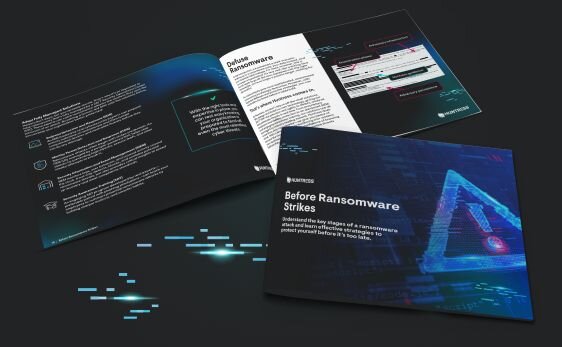
What is the Western Digital My Cloud Ransomware Attack?
The Western Digital My Cloud ransomware attack exploited vulnerabilities in Western Digital’s cloud storage system, My Cloud, to disrupt access to stored data. The ransomware primarily aimed to encrypt user data and demand payment for decryption. This attack targeted Western Digital’s global user base, significantly impairing both individual and enterprise operations dependent on cloud access.
When did the Western Digital my Cloud Ransomware attack happen?
The ransomware attack occurred in March 2023, resulting in a prolonged service outage. Reports indicate that the disruption lasted for several weeks as Western Digital worked to identify, mitigate, and recover from the breach.
Who created the Western Digital My Cloud Ransomware?
The identities behind the Western Digital My Cloud ransomware remain unknown. Speculation suggests the involvement of a highly sophisticated threat actor or group with the capability to exploit significant vulnerabilities in cloud infrastructure.
How did the Western Digital My Cloud Ransomware spread?
The ransomware’s initial infection occurred via a reported compromise of the My Cloud systems. Hackers leveraged system vulnerabilities to bypass security protocols, ultimately encrypting data at scale and rendering it inaccessible. The incident unfolded rapidly, causing immediate disruptions for users worldwide. Subsequently, Western Digital struggled to restore access and mitigate the attack.
Victims of the Western Digital My Cloud attack
The attack primarily impacted Western Digital My Cloud users, spanning individual consumers, small businesses, and enterprises who relied on the service for secure and remote data storage. The widespread user impact underscored the ransomware’s scale and sophistication.
Ransom demands & amount
Reports suggest that attackers demanded an undisclosed ransom in exchange for decrypting affected data. It remains unclear whether Western Digital complied with the ransom demands, as companies often refrain from publicizing such actions to discourage future threats.
Technical analysis of the Western Digital My Cloud Ransomware
The ransomware utilized advanced encryption techniques to lock user data, prompting the need for a private key—which only the attackers possessed—for recovery. The malware was engineered to exploit vulnerabilities in My Cloud’s security framework, targeting core infrastructure to maximize operational disruption.
Tactics, Techniques & Procedures (TTPs)
The Western Digital My Cloud ransomware attack employed common cybercriminal TTPs, including exploiting zero-day vulnerabilities, privilege escalation, and lateral movement within the system. Additionally, phishing and brute-force methods targeting administrative credentials might have facilitated unauthorized system access.
Indicators of Compromise (IoCs)
Key indicators included irregular administrative logins, unusual network activity from unauthorized IP addresses, and rapid changes to data accessibility. Users also reported system-wide data unavailability and ransom notes within compromised systems.
Impact of the Western Digital My Cloud Ransomware attack
The attack caused significant disruptions, including weeks-long system downtime and data inaccessibility. Businesses relying on My Cloud for daily operations suffered productivity and financial losses, while consumers experienced severe inconvenience. Western Digital also faced reputational damage, highlighting the critical need for robust cybersecurity measures in modern systems.
Response & recovery efforts
Western Digital implemented workarounds and rolled out updates to address vulnerabilities. The company also collaborated with cybersecurity experts and government agencies to investigate the breach and aid recovery. Over time, the service was restored, but not without considerable delays and user frustration.
Is the Western Digital My Cloud Ransomware still a threat?
The My Cloud ransomware attack is no longer active, but the potential for similar threats persists. Cybercriminals continue to target cloud storage systems, making ongoing vigilance, timely updates, and secure authentication protocols essential for preventing recurrence.
Mitigation & prevention strategies
To protect against future attacks, users should enable two-factor authentication, apply security patches promptly, and back up critical data in offline or alternate secure locations. Additionally, organizations must invest in robust monitoring solutions to detect and mitigate threats proactively.
Latest News
Stay informed about Western Digital My Cloud Outage and other cyber threats by visiting the Huntress Blog.

Related Educational Articles & Videos
Learn more about ransomware protection strategies through these Huntress resources:


Ransomware is a type of malware that cuts off your access to computers, systems, or networks. Watch the video from our Security Operations Center (SOC) for a breakdown of the ransomware attack path, so you can spot it early, shut it down, and steer clear of hacker paydays.
Western Digital My Cloud Attack FAQs




Protect What Matters









